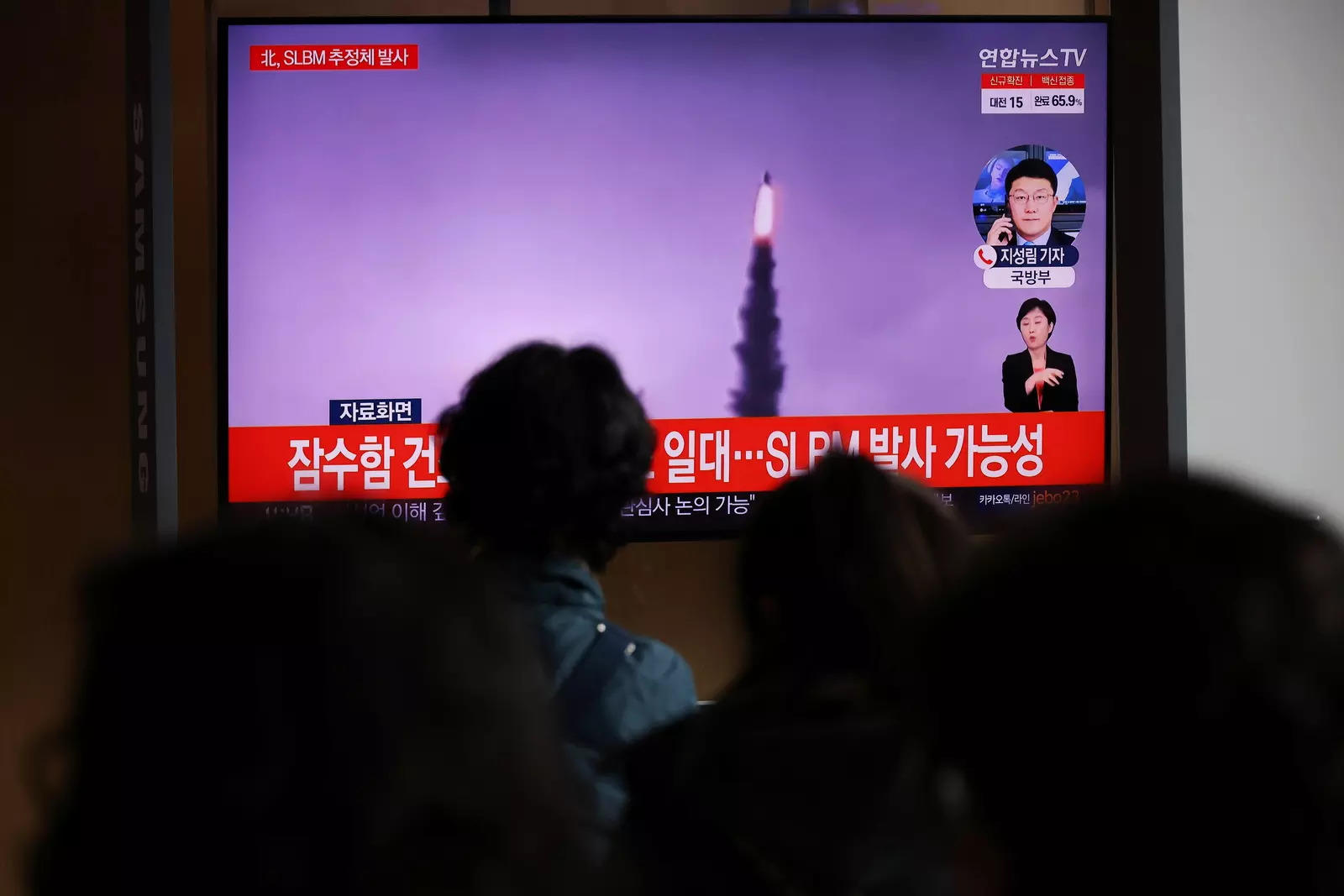North Korea conducted its first submarine-launched ballistic missile test in two years on Tuesday, just hours after a meeting of special envoys on North Korea convened in Washington to discuss how to cope with the reclusive country’s nuclear weapons.
In recent weeks, North Korea has conducted a series of provocations, prompting the National Security Council of South Korea to convene to address the North’s persistent acts of aggression across the area. The United Nations Security Council voiced “great sorrow” that the North had fired a missile amid international attempts to resume talks.
As reported by the South Korean military, the missile was launched from Sinpo, a location on the country’s east coast where North Korea has conducted many missile tests in the past. It also has a naval station in the region, which serves as the headquarters for the country’s submarine-launched ballistic missile development programmed.
South Korea’s military did not release any more information on the test, and its authorities were still analysing the data gathered after the launch. When the North conducts a missile launch, the National Security Council in the South’s presidential office typically convenes to evaluate the risks presented.
North Korea’s submarine-launched ballistic missiles, together with its intercontinental ballistic missiles, constitute one of the most serious military threats to the United States and its regional allies since they have the capability of extending the range of the North’s nuclear-capable missiles. In addition, S.L.B.M.s are more difficult to identify in advance.
In 2017, North Korea conducted three nuclear-capable Hwasong ICBM tests. Following the most recent nuclear test, it claimed that it was now capable of targeting the whole continental United States with a nuclear weapon. As Furthermore, the nation is working on a more stealthy way of delivering its nuclear weapons, such as by using submarine-launched ballistic missiles (SLBMs).
Since 2015, North Korea has been conducting tests of its Pukguksong submarine-launched ballistic missile system. It carried out its most recent S.L.B.M. test in October 2019, when it fired its Pukgukgong-3 missile off the shore of its eastern coast, which was a success. It also showed two improved but untested versions of its Pukguksong missiles, known as the Pukguksong-4 and Pukguksong-5, during military parades conducted in Pyongyang in October and in January. As a “strategic” S.L.B.M., Pukguksong-5 was referred to by the North as such, suggesting that it was intended to carry a nuclear warhead.
It remained unclear if the S.L.B.M.s that the North has launched in recent years were launched from a real submarine or from a platform submerged in the ocean below the surface. Only one submarine capable of launching a ballistic missile was in North Korea’s arsenal, and that craft was equipped with a single launch tube. An entirely new one, with much higher capabilities, is being constructed in the nation.
During a press conference on Tuesday, South Korean military officials declined to say whether the latest test was carried out by one of the North’s two new S.L.B.M.s or the new submarine the country is currently constructing.
South Korea completed its first submarine-launched ballistic missile test last month, marking a significant milestone in the country’s missile development. According to the North Korean government at the time, it considered itself the seventh nation in the world to be armed with S.L.B.M.s (second only to the United States, followed by Russia, China, Britain, France, and India), refusing to recognise the North as a full-fledged S.L.B.M. power.
In recent years, the two Koreas have been engaged in an arms race as the North’s nuclear and missile capabilities have grown, and the South has responded by deploying ever more powerful aircraft and missiles.
On September 30, North Korea performed its most recent missile test, in which it successfully fired a newly designed anti-aircraft missile. Due to the fact that some of North Korea’s missiles are capable of delivering nuclear bombs, foreign authorities and experts pay careful attention to the country’s nuclear weapons launches.

